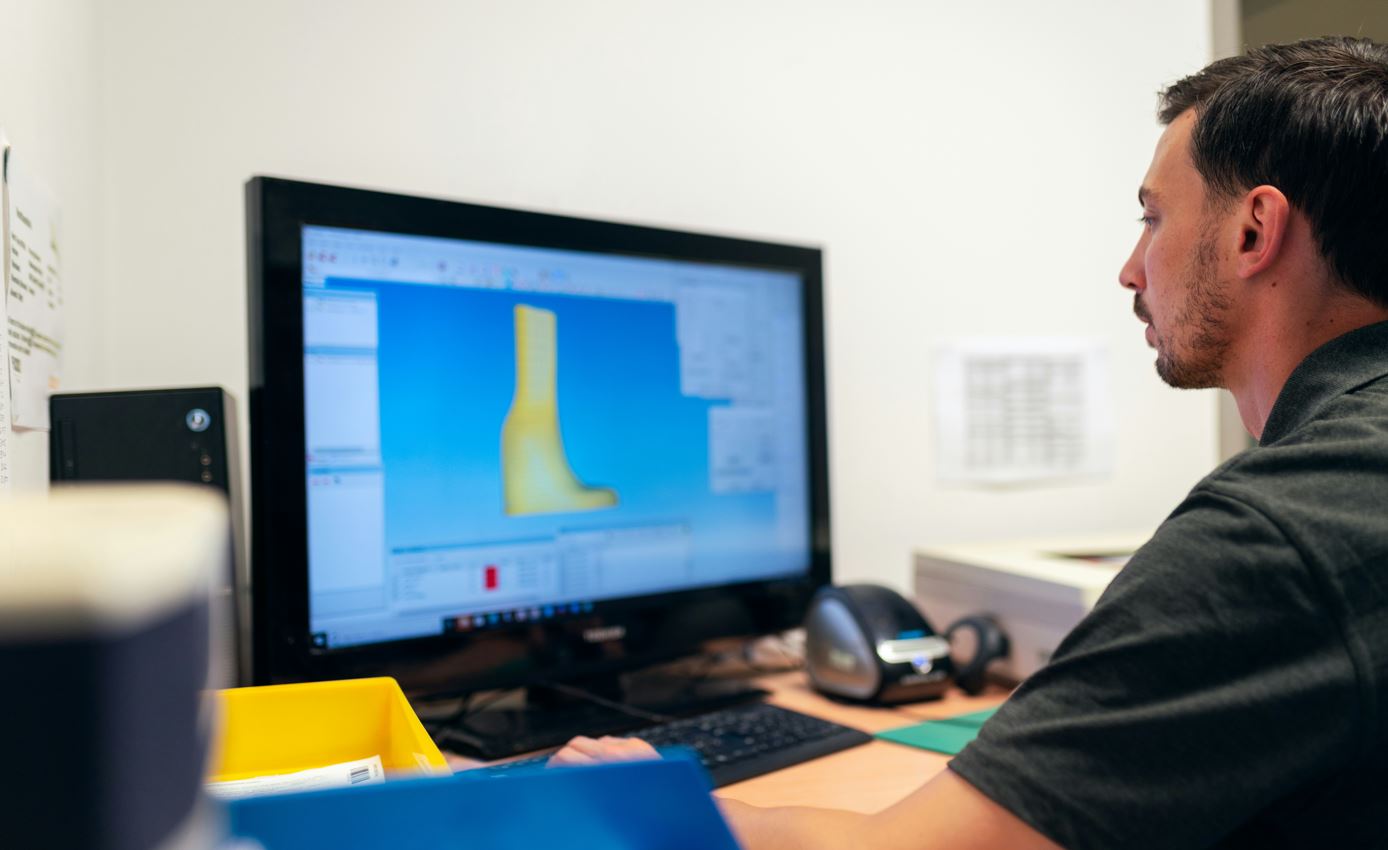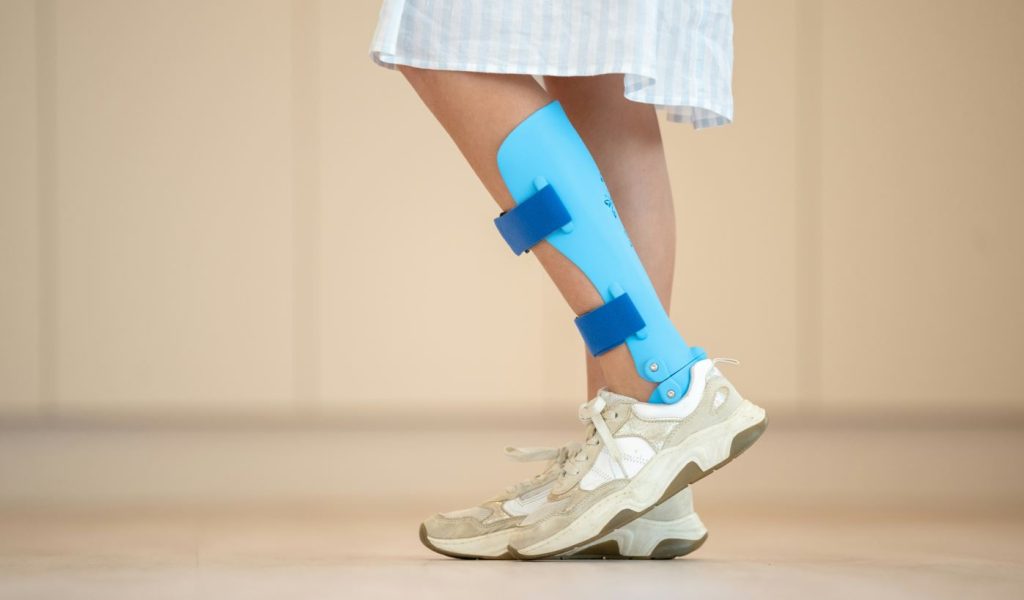Arch support orthotics can revolutionise foot pain management and daily comfort. Choosing the appropriate orthotics is crucial for flat feet, plantar fasciitis, or daily walking assistance. Australians may use this advice to choose the finest arch support orthotics.
Let's Get Straight To The Point
Choosing the right arch support orthotics is crucial for foot health, especially for issues like flat feet or plantar fasciitis. Key steps include understanding your foot type (flat, high, or neutral arches), considering your daily activities, and choosing materials that match your needs (e.g., memory foam for comfort and polypropylene for support).
You can choose between custom-made orthotics, which offer precise support but are more expensive, and over-the-counter options, which are affordable and suitable for mild issues. Always consider fit adjustability, and try orthotics before committing.
Professional advice from a podiatrist is helpful for personalised recommendations. Reviews and recommendations can also guide your decision.
Understand Your Foot Type
Identifying your foot type is essential when choosing arch support orthotics. This knowledge ensures that your orthotics give the right support and comfort for your requirements.
1. Identifying Your Arch Type
Your foot's biomechanical pattern and support needs depend on your arch type:
- Flat Feet (Low Arches): The lack of an arch causes overpronation or excessive foot rolling. This may strain the ankles, knees, and hips, causing pain and injury.
- High Arches: High arches, which have a large space beneath the arch when standing, can cause underpronation or supination, where the feet slide outward when walking or running. This can reduce shock absorption and cause repeated stress injuries.
- Neutral Arches: Neutral arches, the most biomechanically balanced, feature a modest, noticeable arch that doesn't pronate or supinate. Orthotics help this kind of walk or stand comfortably or perform better in sports.
2. How to Determine Your Foot Type
Understanding your foot type can be achieved through several methods:
- Wet Test: The wet test involves wetting your feet and standing on a concrete pathway or thick paper to see your imprint. A footprint can reveal if your arches are flat, high, or neutral.
- Observation of Wear Patterns: Examining historical shoe wear patterns is another way. Heavy wear on the inside of the sole implies overpronation (flat feet), whereas wear on the outside shows underpronation (high arches).
- Professional Gait Analysis: Many sports clinics and podiatrist facilities provide gait analyses for a more thorough evaluation. This study determines your foot type and evaluates your walking or running cycle to identify biomechanical problems that may require orthotics.
3. The Role of Professional Advice
Foot biomechanics are complicated and vary per foot; therefore, contacting a podiatrist might be helpful. A podiatrist can assess your foot type and any foot issues like plantar fasciitis or bunions, which might affect your appropriate orthotics.
Understanding your foot type is more than just a test; it's essential to getting orthotics that give the correct support, flexibility, and comfort. With this customised approach, orthotics can improve posture, relieve pain, and promote foot health.
Consider Your Activities
When choosing arch support orthotics, consider your daily activities. Varied hobbies require varied foot support and cushioning. Running is a high-impact sport, so you'll need orthotics with strong arch support to avoid shin splints and a runner's knee. These orthotics are stiffer to guarantee appropriate alignment when jogging.
However, if you walk a lot, especially on hard metropolitan roads, you may choose orthotics with additional cushioning to absorb shock and relieve foot discomfort. These softer orthotics make lengthy walks and standing more comfortable.
Orthotics with adequate lateral support are essential for professional and amateur sports like tennis and basketball. These stabilise the foot and prevent ankle rolling, preventing sprains and strains.
Your choice of orthotics also depends on your workplace. Orthotics with strong arch support and cushioning can help retail and hospitality workers stand for extended hours. They distribute weight, reduce fatigue, and reduce foot pressure points.
The shoes you wear for different activities might also affect your orthotics. Thinner, less obvious orthotics that support dress shoes without affecting the fit are common. Sports shoes can accept thicker, more supportive orthotics for optimal cushioning.
Choosing the correct orthotics requires considering your regular activities and shoes. This ensures that the orthotics match your lifestyle and give the support you need to stay comfortable and injury-free all day. You enhance their advantages and improve foot health by matching orthotics to your active lifestyle.
Choose the Right Material
Arch support orthotics' comfort, effectiveness, and longevity depend on their material. Varied materials are ideal for varied applications, from corrective support to everyday comfort.
Polypropylene is used for orthotics that need substantial corrective support due to its rigidity and longevity. This material is ideal for people who need solid arch support to prevent foot problems. Its durability keeps orthotics in form and effective even with everyday use.
Ethylene Vinyl Acetate (EVA) is popular for its flexibility and softness, cushioning, and foot support. Its flexibility and impact absorption make EVA excellent for many activities and decrease foot discomfort. It's ideal for individuals who want comfort and support without stiffness.
Memory foam is known for meeting foot shapes and transferring weight evenly over the footbed for personalised comfort. This material conforms to each foot's contour, giving comfort and a personalised fit for sensitive or injured feet. Memory foam is softer and less supportive than other materials; thus, it may not be ideal for people needing strong corrective assistance.
Gel inserts, which absorb stress, are also popular. The gel relieves pressure points and reduces foot fatigue, idealising long-term standers and high-impact athletes. The gel's fluid-like qualities allow it to swiftly adjust to pressure fluctuations, relieving pain during vigorous exercises.
Orthotics for dress shoes and formal wear often use leather. Leather provides a smooth, natural lining that enhances comfort and breathability. It's not as supportive as synthetic materials but is excellent for mild support and increased in-shoe comfort.
Ultimately, the right material for your orthotics should align with your specific needs—whether it's rigid support to correct foot misalignment, cushioning for comfort during long hours on your feet, or a custom-fit feel for sensitive conditions. Considering how the material will interact with your foot and your lifestyle is essential in making an orthotic choice that will enhance your well-being and effectively support your daily activities.
Opt for Custom or Over-the-counter?
Finding the correct foot support requires choosing between custom-made and OTC orthotics. Each variety has benefits; the ideal depends on your demands, foot problems, and money.
1. Understanding Custom Orthotics
Custom orthotics fit and support your feet like a custom fit. They are made after a podiatrist or orthotic specialist performs physical tests, gait analysis, and 3D imaging. OTC orthotics may not properly treat severe overpronation, plantar fasciitis, or other biomechanical concerns, but this extensive customisation does.
The benefits of bespoke orthotics are many. They fit your feet perfectly, offering accurate adjustment and support where you need it. This can greatly increase comfort, movement, and injury prevention. Custom orthotics are helpful for those with complicated foot issues or who have not responded to traditional therapies.
Due to their personalisation, custom orthotics are more expensive than OTC choices and may require a doctor's visit. Despite the larger initial price, their longevity and efficacy can save money and reduce medical care needs.
2. Exploring Over-the-Counter Orthotics
OTC orthotics are commonly accessible and non-prescription. These prefabricated inserts fit many foot types and shoes due to their form, size, and substance. They are ideal for mild to moderate foot pain or extra comfort.
The accessibility and cost of OTC orthotics make them appealing. They're easy to get and let you try several sorts without spending much. Many people find OTC orthotics relieve pain and enhance foot function in daily life.
Due to their generic nature, OTC orthotics may only fit some people or provide the corrective support they need. Adopting the wrong orthotic might cause inadequate support or alignment concerns without expert advice.
3. Making the Right Choice
Consider your budget, activity level, and foot problem complexity when choosing between bespoke and over-the-counter orthotics. Bespoke orthotics are advised for particular, chronic, or severe foot issues for the most thorough support and treatment. If you have minor difficulties or just want basic comfort assistance, OTC orthotics may be plenty and cheaper.
Seeing a podiatrist can help you decide. Their thorough assessment of your foot health, lifestyle, and preferences might help them choose the right orthotic. Custom or OTC orthotics should assist your foot health and improve your quality of life.
Trial Period and Adjustability
When buying arch support orthotics, trial period and adjustability are key. These criteria help ensure that orthotics fit well and meet your demands.
Orthotics makers and dealers provide trials since they know how important fit is. You use the orthotics for a few weeks to see how they operate daily. You can determine if the orthotics support and fit your shoes at this period. If the orthotics don't fit, you can return them for a refund or try a different type within the trial period.
Orthotics adjustability is also significant. Some orthotics include detachable layers or changeable arch supports to modify fit and support. This is handy since you may adjust the orthotics to your comfort demands or foot changes. As your feet acclimate to the orthotics, you may require more or less support in particular places, and modifying the orthotic yourself means you can maintain optimal comfort without buying a new pair.
Adjustable orthotics can also be used in different shoes. Running shoes require a stronger orthotic than formal shoes. Cost-effective and handy, adjustable orthotics may suit many shoe types.
Orthotics with a trial period and flexibility can boost customer satisfaction. These capabilities let you evaluate orthotics in real life and make modifications as required. This strategy eliminates risk because you may return the goods if it doesn't match your needs and provides for a more personalised fit that can adjust to changing demands.

Read Reviews and Seek Recommendations
Reading reviews and getting recommendations might help you choose arch support orthotics. This stage lets you learn from people with similar requirements or foot difficulties. Before buying, orthotics reviews and customer comments can help you understand their efficacy, comfort, and durability.
Many internet portals provide reviews and ratings of orthotics. Foot health, sports equipment, and consumer goods websites commonly offer user-generated orthotic evaluations that emphasise pros and cons. These evaluations will help you determine which goods function effectively in real-world situations and which may have ongoing difficulties, like bad build or support.
Professional advice can also aid decision-making. Podiatrists, physical therapists, and skilled shoe store workers have considerable orthotics experience and may advise based on clinical observations and patient feedback. Their professional expertise can help you choose the best orthotics for your symptoms or activities.
Personal orthotic suggestions from friends, relatives, or fellow athletes are often helpful. These people can share their orthotic experiences, which may help you. Their experiences can help them advise on what to look for and avoid, especially if they have a similar lifestyle or foot form.
Professional guidance and personal experiences through reviews and recommendations can help you pick orthotics. This combination strategy avoids typical mistakes and guides you to high-quality, useful items. Gathering this information can help you make a more educated choice that will increase comfort, foot health, and overall orthotics satisfaction.
Consult a Professional
Consulting a podiatrist is essential when choosing arch support orthotics. These specialists know foot anatomy, biomechanics, and the intricate interactions between our feet and bodies. They can offer personalised advice on your health, lifestyle, and foot issues.
A professional foot assessment may examine your stride or gait, check for alignment concerns, and pinpoint particular pain sites or structural abnormalities. This thorough investigation helps the podiatrist select the best orthotic for your needs. If you have flat feet that overpronate, a podiatrist may recommend orthotics with increased arch support and stability to improve your foot posture and reduce body strain.
Professionals can help choose, fit, and use orthotics. Orthotics work best when worn correctly and regularly, and a specialist can help you incorporate them into your everyday routine. They can also track your progress and tweak the orthotics to ensure they work as your condition improves.
Consulting a specialist is especially helpful if you have ongoing foot issues or conditions that require specialised treatment. Diabetes, arthritis, and severe foot deformities require a more customised approach to foot care, and a professional can help you find safe and efficient treatments to reduce issues.
Podiatrist input can improve orthotics' efficacy. With their knowledge, you may choose orthotics that improve foot health and quality of life, keeping you active and pain-free.
Conclusion
Choosing the correct arch support orthotics is essential to improve foot health and quality of life. The appropriate orthotics can support your feet while you navigate Sydney's busy streets, the Outback's rough terrain, or your everyday routine.
You must first understand your foot type and its demands to select the right orthotics. Consider your daily activities to determine the optimal orthotic support and kind. Material selection may differ between walking on air and struggling through sand.
Custom or over-the-counter orthotics depend on your foot problems and budget. While more expensive, custom orthotics can accommodate complicated or severe foot issues. However, over-the-counter solutions are easily available and useful for milder symptoms.
Be sure to try the orthotics and adjust them to your comfort. Read reviews and ask professionals and peers who have travelled similar journeys for advice. Finally, a specialist can offer personalised advice to ensure that your orthotics match your foot, lifestyle, and goals.
By carefully evaluating these factors, you're more likely to choose orthotics that support your active and comfortable lifestyle. Step forth confidently, backed by the correct foundation, to walk, run, and explore Australia.
Frequently Asked Questions
Frequently experiencing foot pain, weariness, or discomfort, especially after extended standing, walking, or running hours, may indicate that you require foot support. Pain in the arch, heel, or sole may suggest plantar fasciitis or flat feet and require arch support.
Precision measurements and gait analysis are used to create custom orthotics that suit your feet and treat your foot troubles. Patients with significant biomechanical difficulties or certain medical diseases are usually prescribed them. Over-the-counter orthotics are mass-produced and designed to fit general foot shapes, offering support and comfort for more common foot problems. They are cheaper and an excellent starting point for modest pain.
A simple method to determine your foot type is the "wet test." Wet your foot, step onto a piece of cardboard or heavy paper, and observe the footprint. If there's a lot of foot contact with the surface, particularly along the inside edge, it likely indicates flat feet. A narrow connection between the heel and forefoot suggests high arches. A moderate, noticeable arch likely means you have a neutral arch.
Some orthotics suit various shoes, but trying them on is crucial. Different shoe styles may not suit some orthotics. For instance, running shoe orthotics may not suit formal shoes. Orthotics should be modified or purchased for different footwear types for optimum support and comfort.
Archsupport orthotics last differently depending on the material, frequency of usage, and activity. Good bespoke orthotics may endure for years with appropriate care. As materials wear out and lose efficacy, over-the-counter orthotics may need to be updated every 6–12 months. Maintaining foot health requires checking orthotics for wear and changing them as needed.


